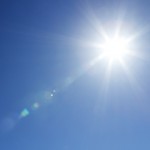About Indonesia
Indonesia has a tropical climate with high temperatures and humidity year-round, a wet season and a dry season. The diverse topography and varying size of these islands result in regional climatic variation. As a rule, inland areas are cooler than coastal regions as they tend to be at higher elevations; many islands are mountainous, the highest, snow-capped mountains exceeding 3000 m.
Bridging the equator, Indonesia receives little variation in temperature from season to season; the wet season is only about 1°C hotter than the dry season. Across coastal areas, where all of the traditional holiday destinations are, the average high temperature rarely strays far from 31°C, and the average low temperature is usually around 23°C. Humidity is high at all times without exception. The first thing that hits you when you go to an equatorial area like Indonesia is the combination of heat and humidity; it instantly wraps itself about you like a warm, wet tongue. The air feels thick in your lungs and sweat instantly beads on your upper lip. These conditions become even more intense on entering the rainforest and the risk of dehydration is high, though as you climb higher the heat relents. For most, this is hard to acclimatise to and most find air-conditioning a must at night time. However, there is something to be recommended of fan cooled beach huts, with the sea breeze sneaking up through the slats in the floor.
As Indonesia is a tropical archipelago, rainfall can be expected at any time of year, but the wet season, as its name suggests, generally sees a marked increase in rainfall. There is great regional variation in terms of the length of each season, and when they fall in the year, so rainfall levels for specific locations should be checked before travelling. Some areas, for instance, Ambon and Medan, see a complete reversal of the seasons, while others, such as Padang and Biak, see incredibly high rainfall all year with no seasonal variation.
The wet season in the main tourist areas, for instance, Jakarta, Bali, Lombok and most of Borneo, generally lasts from November till April. During this season, the weather of the islands is dominated by the north-western monsoon winds which bring huge volumes of rain in torrential tropical storms. Heavy rainfall crashes down in violent thunderstorms and can cause flash flooding and landslides. Aside from being inconvenient for the traveller, these conditions can become dangerous and the poorer communities often suffer great losses of every imaginable kind. Every year sees fatalities caused by flooding with many more made homeless. Climate change is causing these floods to worsen each year. Due to the directionality of the wind, northwest regions tend to receive higher rainfall; the islands closest to Australia actually have quite dry climates. This season is generally more overcast and unpredictable. It still sees around six hours of sunshine but these hours are frequently broken by short downpours. It is important for travellers to remember that even when the sky is a heavy grey the UV index remains high, and sunblock should be worn at all times.
The dry season, from May till October, is not exceptionally dry in most places. However, storms become shorter and occur less frequently and the sun shines for around nine hours a day. While some feel there is no need to avoid Indonesia or the rest of Southeast Asia during the wet season, the dry season is the accepted tourist season and with good reason. The sea is calmer, the rain relents and the sun beats down; everything becomes easier and more enjoyable from sunbathing to taking a boat trip to eating at a hawker stall. The sea, which is always warm enough to swim in, presents visibility conditions more favourable to snorkelling and scuba diving. While it is true that days perfect for these activities happen during the wet season, the dry season offers more.
Despite being surrounded by the sea, Indonesia is not susceptible to hurricanes. However, Indonesia does have more active volcanoes than any other country and is also prone to earthquakes. Java and Bali are the most active. The eruption of Indonesiaâs Mount Krakatoa in 1883 is perhaps the most famous eruption of all time; it destroyed two-thirds of the island, was heard in Perth and sent thick clouds of volcanic dust westward which played havoc with the weather all over Europe. Now it is the clouds of smoke from Indonesiaâs industrial factories that interfere with the weather in surrounding areas. In 2004 the earthquake off the west coast of Sumatra in the Indian Ocean triggered the devastating tsunami, killing almost a quarter of a million people, and 80,000 in Banda Aceh alone. While huge eruptions are rare, it is important to check on volcano eruptions before travelling to Indonesia.
Indonesiaâs climate can be attributed to its equatorial location which keeps temperatures high with little seasonal variation; its location in the Indian Ocean which means it is susceptible to monsoons; its mountainous topography which creates temperate and alpine microclimates and also traps the northwest monsoon winds making northwest regions wetter; and to the varying size and location of the islands which changes each areaâs susceptibility to the moderating effects of the sea and to winds.


















